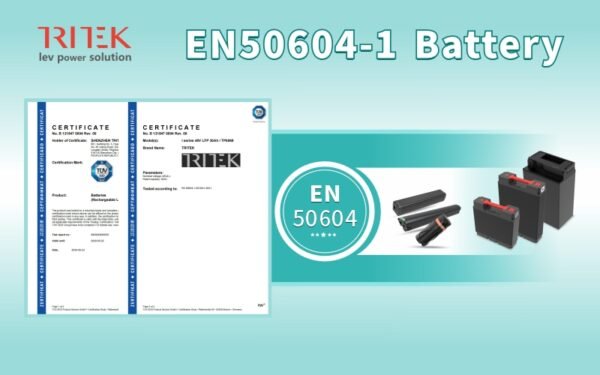
CANopen vs J1939 vs Custom CAN: Which One Fits Your Lithium Battery Application?
Unsure which protocol fits your battery system? This guide explains CANopen vs J1939 vs Custom CAN with clear advantages, limitations, and ideal use cases.

Unsure which protocol fits your battery system? This guide explains CANopen vs J1939 vs Custom CAN with clear advantages, limitations, and ideal use cases.

E-bike and e-scooter batteries use CAN protocol for superior safety, noise immunity, diagnostics, and smart connectivity. Learn why CAN is now the industry standard.

Learn how CAN communication in lithium batteries works, its benefits, integration with BMS, and why choose CAN for e-mobility applications.

Discover what is a hot-swappable battery, how does it work, why it matters and Tritek’s dual and multi-battery hot-swappable solutions.

Discover key battery certifications like UL, EN, UN, CE, FCC, and IEC for safety, performance, and market access. Learn the importance, costs, and duration.

The battery C-rate is one of the most important specifications for evaluating battery performance, especially in high-demand applications like electric vehicles, e-bikes, energy storage systems,

Learn why batteries overheat, the dangers of thermal runaway, and the safest fixes—straight from Tritek’s battery-safety engineers.

Lithium-ion batteries power everything from smartphones to electric vehicles, but what happens when the lithium-ion battery gets wet? Water exposure risks short circuits, chemical reactions, corrosion,

Learn how to choose the best LEV battery: compare LiFePO4 vs. NMC, key specs, certification, BMS, and more. Tritek offers tailored options.

Sourcing for EN50604-1 Battery? Read our article to know what is it, why it matters, and how to source certified EN 50604-1 battery packs.

Discover LEV battery: power sources for e-mobility. Learn key specs, safety features (IP67/BMS), and why Tritek’s certified lithium solutions lead the industry.

Lithium-Ion vs Lithium Polymer: Discover key differences in performance, safety, and applications to choose the best battery.
Tritek is your ODM partner for lev battery, and we pay close attention to your requirements.
* required
